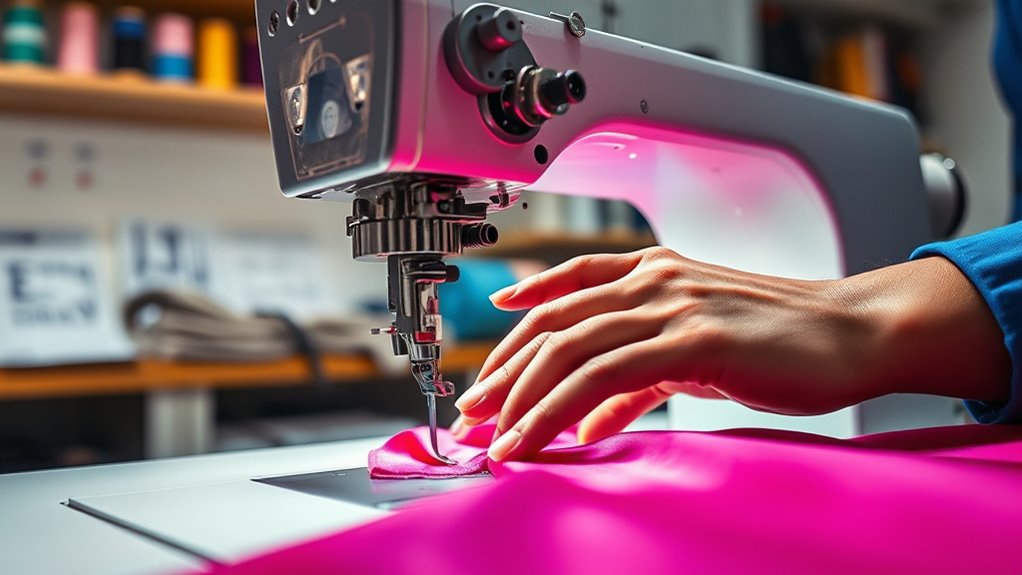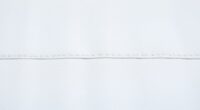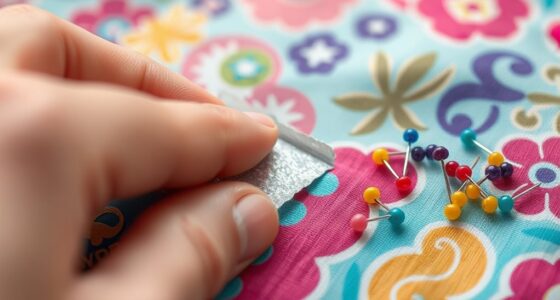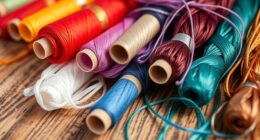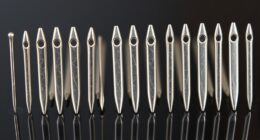To speed up your sewing, adopt habits from couture workshops by choosing high-quality fabrics from the start, which makes cutting and sewing easier. Adjust patterns precisely before cutting to avoid fitting issues later. Keep your workspace organized with tools within reach, and practice basic techniques to develop muscle memory for cleaner, faster stitches. Making thoughtful decisions and preparing adequately helps you work smarter, not harder — and there’s much more to discover if you continue exploring these time-saving techniques.
Key Takeaways
- Choose high-quality, stable fabrics to facilitate easier cutting and sewing, reducing frustration and rework.
- Adjust patterns accurately before cutting to ensure a better fit and minimize fitting sessions later.
- Maintain a well-organized workspace with tools within reach to streamline workflow and reduce interruptions.
- Practice basic techniques regularly to develop muscle memory, improving accuracy and sewing speed.
- Adopt disciplined habits like thorough preparation and strategic decisions to work smarter and faster.
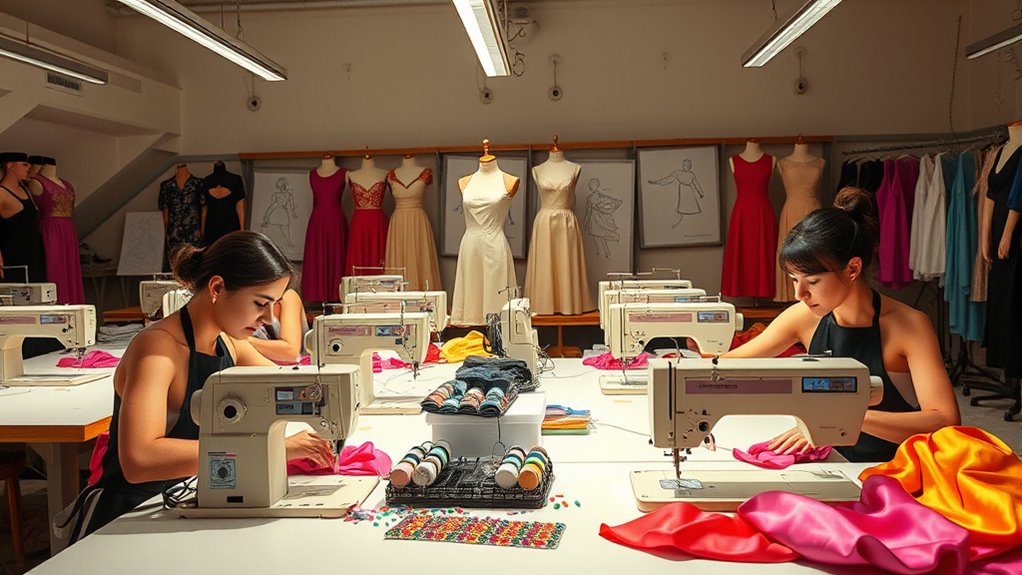
Have you ever wondered how some sewists finish projects in a fraction of the time? The secret often lies in their smart habits, learned from years of working in couture workshops. These habits aren’t just about speed; they’re about working smarter. One key area is fabric selection. When you choose the right fabric from the start, you save yourself hours of frustration and adjustments down the line. High-quality, stable fabrics tend to cut and sew more easily, while tricky fabrics like slippery silk or stretchy knits require more patience and fiddling. By selecting fabric that suits your pattern and skill level, you can streamline the entire process. Before even cutting into your fabric, spend time evaluating its weight, drape, and fiber content. A fabric that behaves predictably will help you avoid mistakes and reduce the need for rework. Additionally, understanding your fabric’s characteristics can help you select the appropriate sewing techniques, further enhancing your efficiency. Pattern adjustment is another vital step that can considerably cut down sewing time. Instead of rushing through a pattern without fitting, you take the time to tweak it to your measurements before cutting. This prevents fitting issues later, which can lead to ripping seams or starting over. Couture sewists often make small adjustments—grading seams, adding ease, or blending darts—so that the garment fits perfectly right away. They also mark and baste as they go, rather than waiting until the end to check fit. These habits mean fewer fitting sessions and less unpicking later. You’ll find that pattern adjustment isn’t just about making the garment look good; it’s about creating a precise template that guides your sewing, reducing errors and saving time. Additionally, having a well-organized workspace helps you work faster. Keep your tools and notions within arm’s reach, and prepare everything before you start. This way, you’re not stopping to hunt for scissors, pins, or thread mid-project. Using quality tools, like sharp scissors and pins that hold fabric securely, also minimizes mistakes and speeds up your work. Regularly practicing basic techniques, like sewing straight seams and accurate seam allowances, builds muscle memory, so you spend less time correcting mistakes. In essence, speed sewing isn’t about rushing blindly. It’s about making thoughtful choices from the beginning—like selecting the right fabric, adjusting your pattern for a perfect fit, and organizing your workspace. These habits, borrowed from couture workshops, help you work more efficiently without sacrificing quality. With practice, you’ll find yourself completing projects faster and with better results, turning sewing into a more enjoyable and productive experience.
Frequently Asked Questions
What Tools Are Essential for Speed Sewing Success?
You need essential tools like a reliable sewing machine and sharp scissors to speed up your sewing. Keep your sewing machine well-maintained to prevent jams and guarantee smooth stitches. Choosing the right thread is vital; opt for high-quality thread to avoid breaks and save time. Using these tools efficiently helps you sew faster and more accurately, turning your projects into professional-looking garments with less effort and stress.
How Can I Improve My Sewing Accuracy Quickly?
To improve your sewing accuracy quickly, focus on adjusting your thread tension for smooth stitches and consistent stitching. Keep your seam allowance precise by using guides or markings, and stay attentive to fabric edges. Practice sewing straight lines, and slow down if needed to maintain control. Over time, these habits will become second nature, boosting your accuracy and confidence with every project.
What Fabric Types Are Best for Fast Sewing?
Imagine slicing through fabric like a hot knife through butter—that’s what choosing the right fabric types can do for your speed sewing! Opt for fabrics with a little stretch, like jersey or lycra, which glide smoothly under your needle, and go for lightweight options like chiffon or voile that are easier to handle. These fabrics reduce fuss and save you precious time, making sewing faster and more fun!
How Do I Handle Mistakes Efficiently During Sewing?
When handling mistakes during sewing, stay calm and act quickly. First, check your thread tension to prevent uneven stitches. If you notice errors, rip out the seam carefully, keeping seam allowances intact for easy resewing. Adjust your machine settings as needed to avoid future mistakes. Using sharp scissors to trim loose threads helps keep your work neat. Efficiently managing errors minimizes wasted time and keeps your project moving smoothly.
Are There Specific Patterns Suited for Speed Sewing?
You can speed up sewing by choosing patterns with simple lines and minimal details, which are easier to adapt for fast sewing. Focus on machine maintenance to prevent breakdowns, and consider pattern adaptation to streamline complex designs. Opt for patterns that suit your skill level and allow quick adjustments. This way, you save time and reduce mistakes, making your sewing process more efficient and enjoyable.
Conclusion
Just like a master artisan carving out perfection, adopting these time-saving habits transforms your sewing into a swift, confident craft. Remember, even Da Vinci needed practice to master his strokes; so, don’t rush—embrace the process. Over time, these couture-inspired habits will become second nature, turning your sewing sessions into a symphony of efficiency. With patience and persistence, you’ll find yourself weaving through projects faster, creating beautifully crafted pieces with the precision of a seasoned artist.
